Having outlined some of the limitations of the design in my two previous articles, I will now offer some suggestions as to how the performance of the Fulvia may be improved. These are based almost entirely on experience of modifying Fulvias on a restricted budget; I have not had the opportunity of tackling a “carte-blanche” project!
Before I begin I should like to set some terms of reference. These ideas and suggestions will be general rather than very specific. Every engine has its own requirements in such areas as fuelling, ignition and cam timing.
Cylinder Head
A gas-flowed 1300 Fulvia head – note the dowels to locate the manifold accurately
As with almost any engine, one should start with the cylinder head. The original fit and finish on the head and its associated components is not perfect – more so on S2s than on S1s of course. All the normal procedures apply and I expect that to many of you they are well known.
Match the inlet manifold to the head and dowel it to ensure accurate repeat fitting. Match the carburettor mounting rubbers also; there is usually a nasty “step” at this point.
Gas flowing a Fulvia is a tough business, first because of the two long ports on each side and second because of the hard, high-quality aluminium alloy used. The usual method requires the use of a good die-grinder with a long “snout” that will allow full access. Tungsten carbide burrs can be used – with care – to “rough out” the valve throats, flap wheels of 60 grit are used for the ports and for the throats but these have to be reduced in diameter before they will enter the ports. A “split stick” with 150-grit paper is used for finishing. Normal practice on the inlet side is to work at the ports until their diameter is about 85% of the inlet valve diameter. This is possible on a Fulvia with standard size valves or even slightly bigger ones. I normally remove all of the boss around the valve guides although one experimental head I did featured a modified boss on the inlet side to provide a “twist” to the incoming charge to ensure better homogeneity of the mixture. I understand it works quite well. Either way, the principal result of this work is greatly improved torque – and I am convinced that much of the benefit comes from the exhaust side. Considerable improvement can be made to the inlet manifold by careful attention. In general I recommend that anyone who fancies trying gas flowing should a) practise on a scrap head and b) read a decent textbook about gas flowing theory – actually in reverse order!
The valve seats should be cut to three angles – for the valve seat itself I prefer 45 degrees to the 30 degrees found on 1300 inlet valves and on both valves on the 1600. A radiused seat is better still (inlets only) and the exhaust seat should be about 1.5mm wide, no more. On standard heads, the seat area can always be considerably opened up greatly improving flow. The inlet seat should be on the edge of the valve and 1mm wide. Careful work on port matching and valve seats and throats probably yields about 75% of the improvement obtained from a full gas flow job.
Seat cutting with a Serdi machine
Larger valves can of course be fitted, but not much larger without drastic changes by which I mean enlarged inlet valve seats. It is a simple job to use 1600 valves in a 1300 head, but of course this represents only a 5.8% increase in valve area; on the other hand every little bit helps.
Important: if you fit larger valves then it is necessary to enlarge the cut-outs in the piston crowns; failure to do this (certainly on 1600s) will result in bent valves and damaged pistons. I have a good procedure for doing this – contact me for details.
Remember that if much larger valves are to be used, the seats will have to be cut deeper and this will mean that the installed height of the valves will be incorrect leading to possible valve float problems unless the valves are correctly specified. Small changes may be corrected with hard washers under the springs. It is however, debatable whether, with the limited port size, any significant benefit will be obtained. In my own engine I have 39.5mm inlet valves and 37mm exhaust valves. The exhaust valves were really a whim as I had some good quality austenitic stainless 1300S inlet valves available and just decided to give the idea a try. Luckily (as it was rather a one-way operation) I detected a small increase in torque in the mid-range and that was it – no money for dyno sessions at the time!
Next time: a look at the valve gear



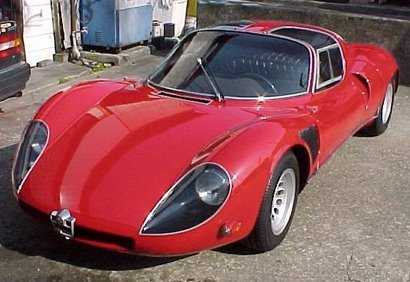
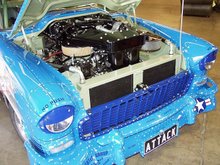
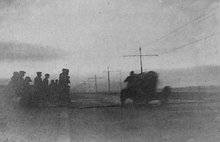



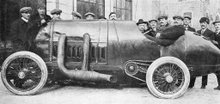


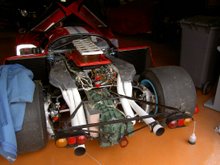

4 comments:
Hi Paul
Very interesting stuff! I shall be waiting until I've read all your articles before I decide what to do with my engine!
Robert
Thanks Robert; I haven't all the answers you know, but I think some of it should be useful.
My 1300HF head with factory polished ports has 1600 vanves fitted albeit with a standard 30deg cut. These valves are of poor quality as they show damage caused by the tappetscrew to soon.I wish to change them for better quality valves as i can find them but wish to change the seat to a 45deg cut as well. My question is what will happen to the installed height if the seat is recut from 30 to 45. Howmuch higher(deeper) will the valve sit as the rocker allready cames close to the springcap?
If you recut the seats and of course, reface the valves, there will be a change of course. How much depends to a certain extent on where the seats are at present. The main problem comes when much larger valves are fitted.
Post a Comment